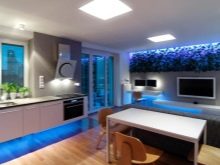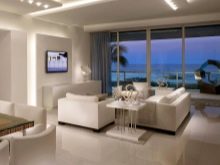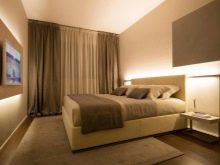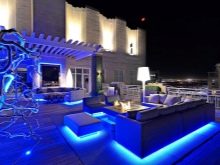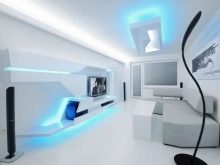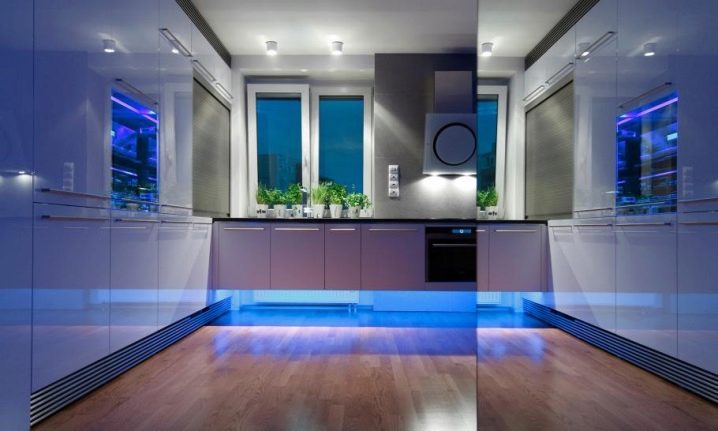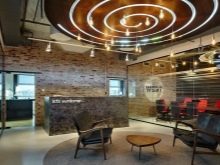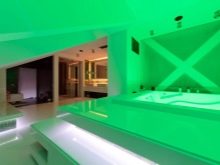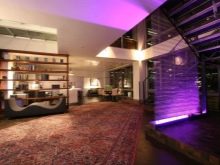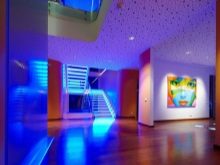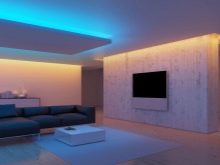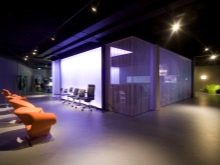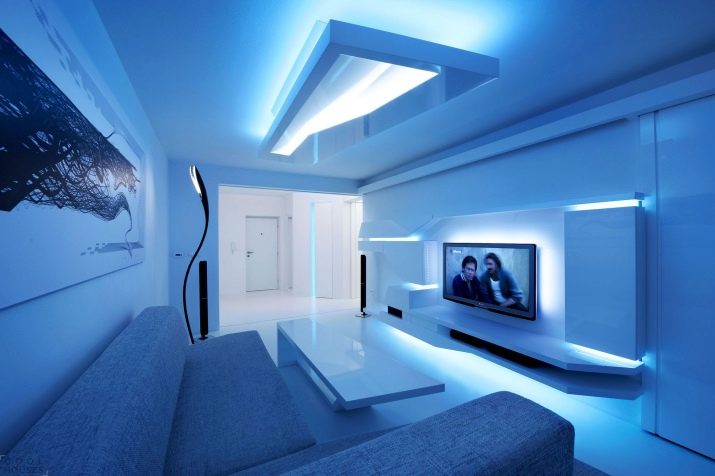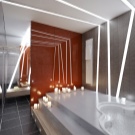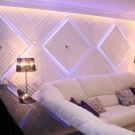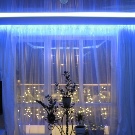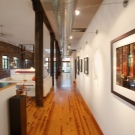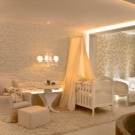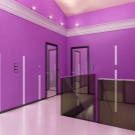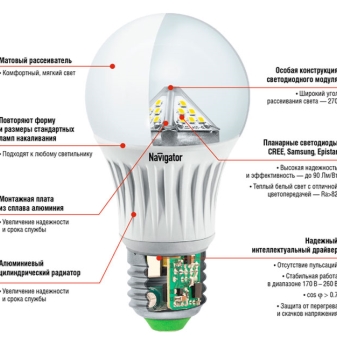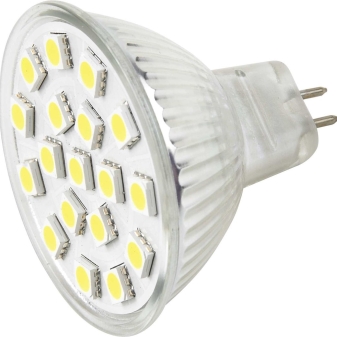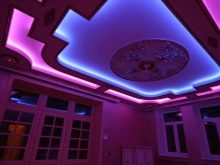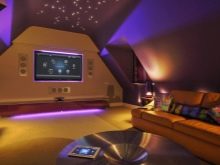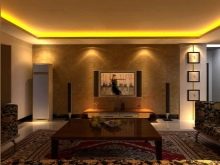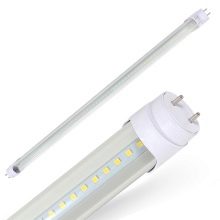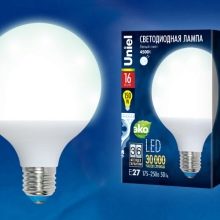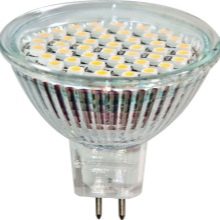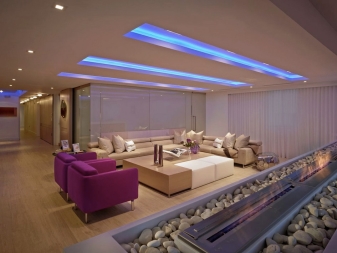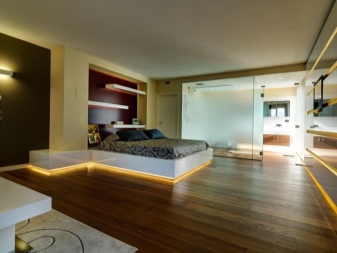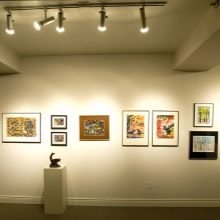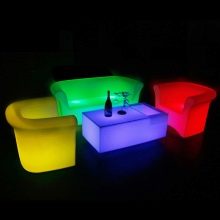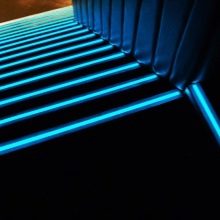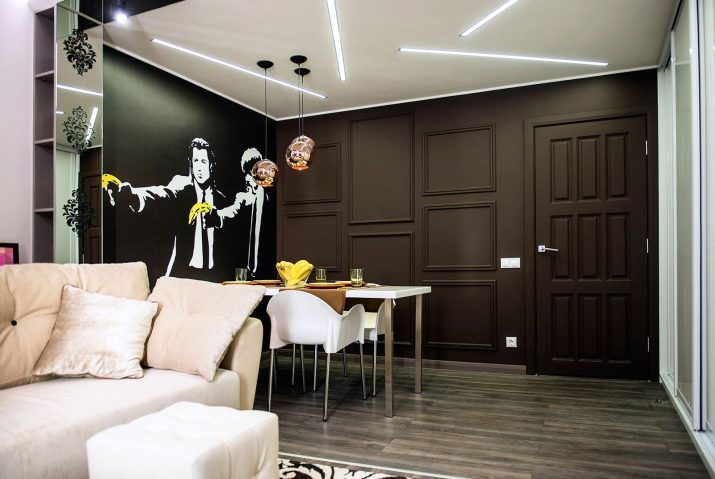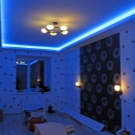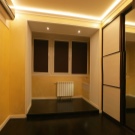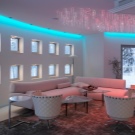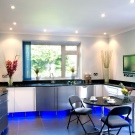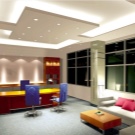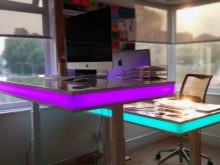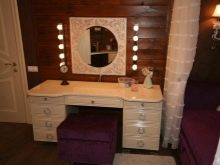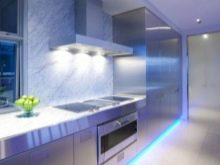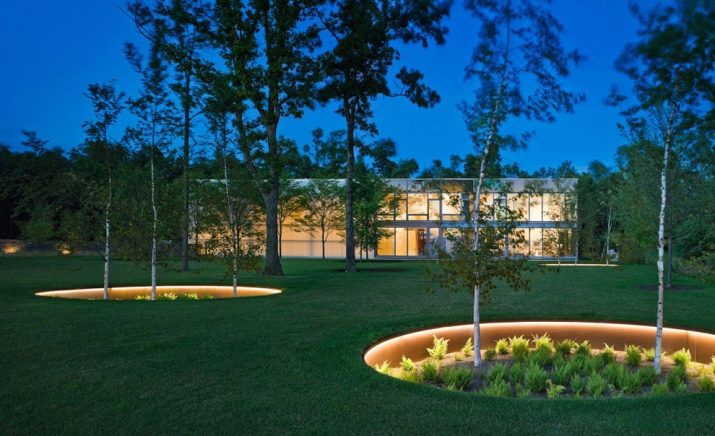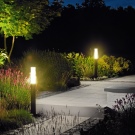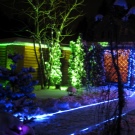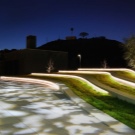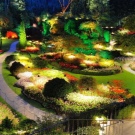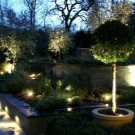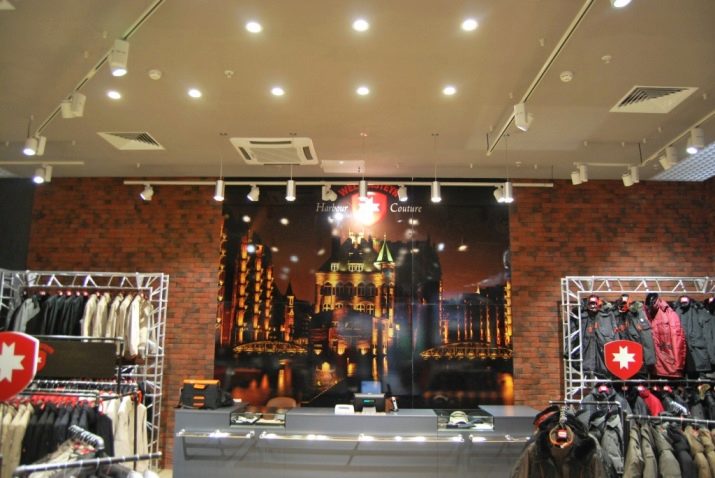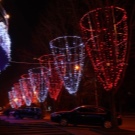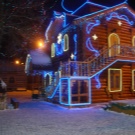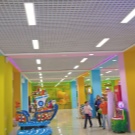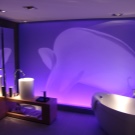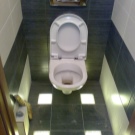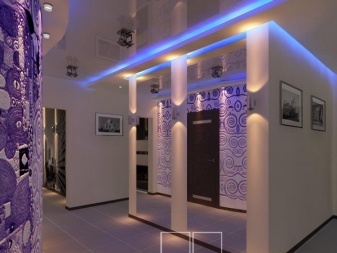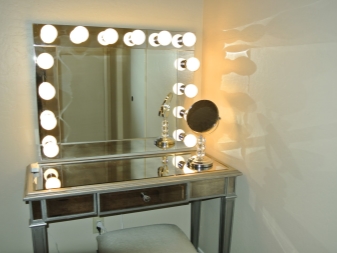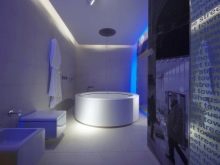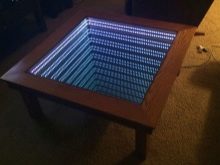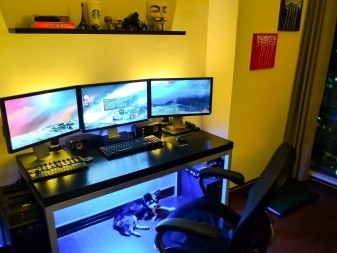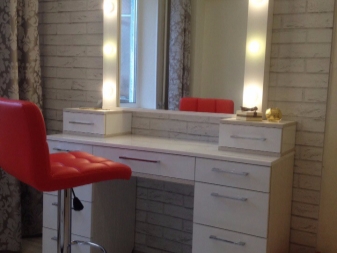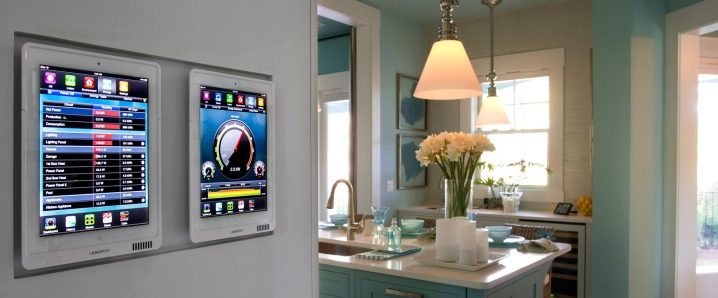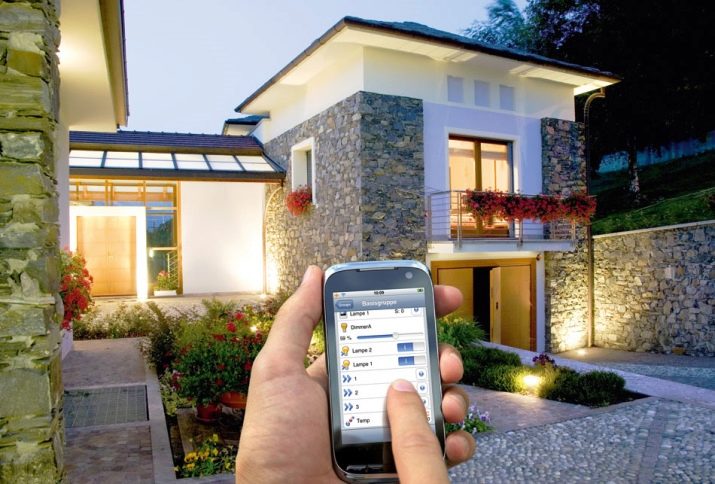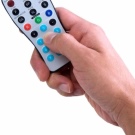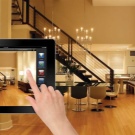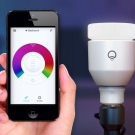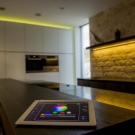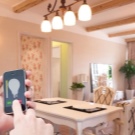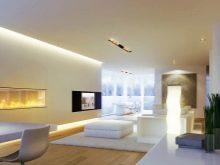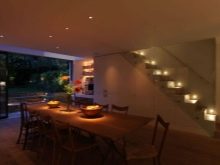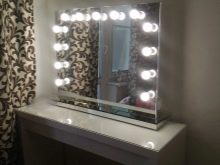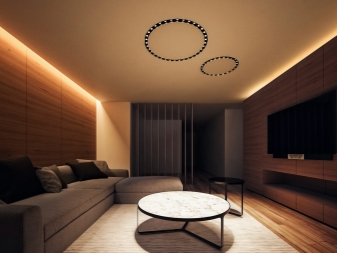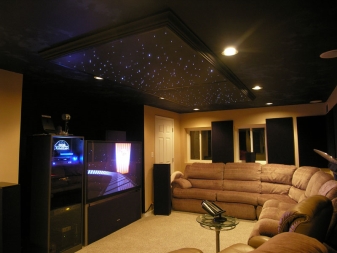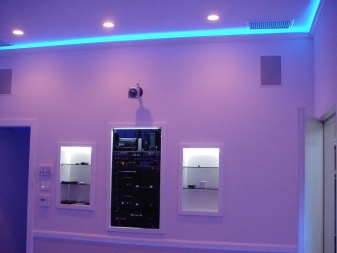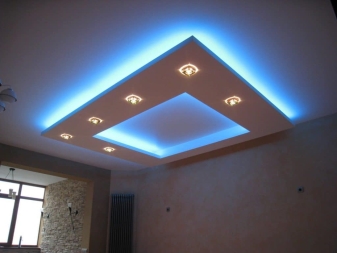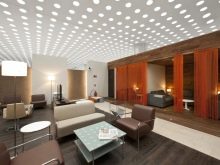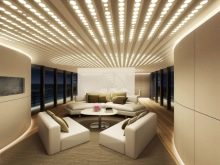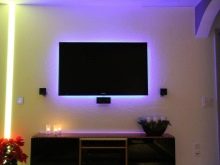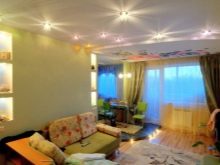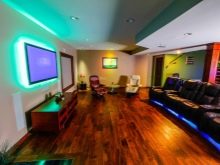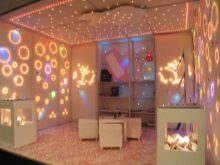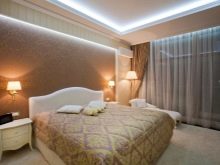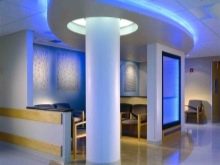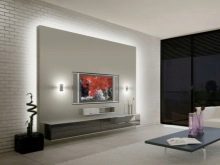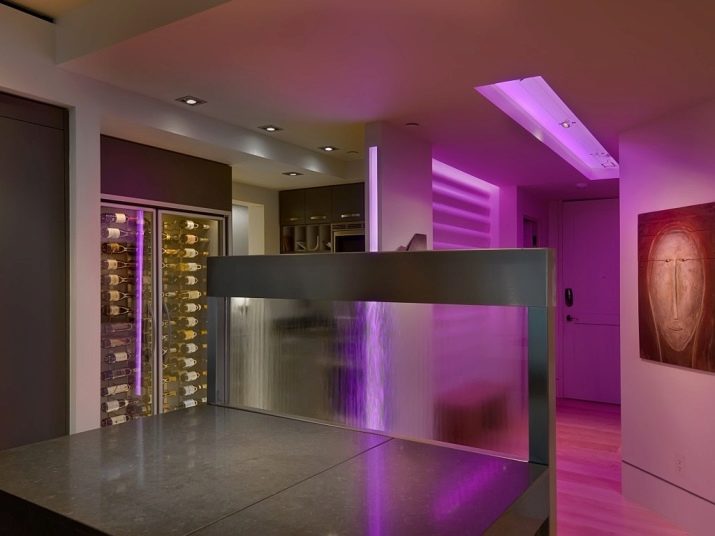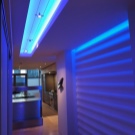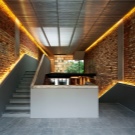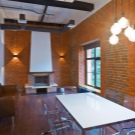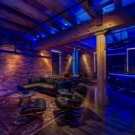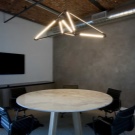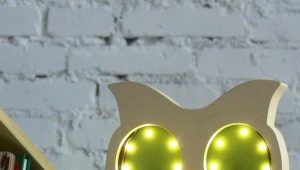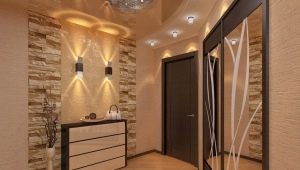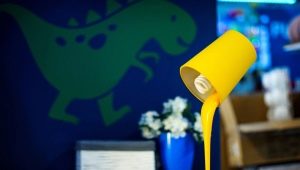LED lightening

LEDs - an innovative solution in the field of lighting since the appearance of electricity. LED lighting is a step towards practicality and environmental friendliness. This technology, although relatively young, continues to force out its competitors. The popularity of LED light sources is growing every year, replacing the usual lighting for us. LED-lamps have been successfully used in industrial and office facilities, in trading floors and in apartments.
Advantages and disadvantages
LED lighting is difficult to surprise anyone. These devices of high brightness, high efficiency and economical energy consumption continue to conquer our homes, replacing incandescent and fluorescent lighting.LED lamps are devices that not only give the soulful atmosphere of each room, but also provide a long service life and durability, and open up new possibilities for decoration and design. Today, LED devices are available to everyone, but before making a choice in their favor, you need to carefully examine all the pros and cons of this lighting system.
Benefits:
- Energy savings of 70% ;.
- Long service life (subject to the necessary recommendations up to 30 years);
- Easy installation;
- High strength;
- Mobility: a system of any configuration is assembled from several modules;
- Does not flicker, as it works on direct current;
- Does not create ultraviolet radiation, thereby ceasing to be attractive to insects;
- LEDs better tolerate voltage drops: the allowable range is from 80 to 230V;
- Does not heat up;
- Does not make noise;
- It is controlled remotely using the remote or modern gadgets;
- Adjustable brightness and color variations.
Profitable, fashionable, convenient - all these are the characteristics of modern LED strips. However, LED lamps have some drawbacks:
- At a great distance, the effect of "spotting" occurs. To avoid this, you should increase the number of LEDs in the tape;
- When burnout one diode the whole system goes out;
- Lighting fixtures especially external, need periodic cleaning and checking fasteners;
- Regarding high price.
The properties of the light emitted by the LED are similar to the properties of fluorescent lighting.
Consequently, LEDs emit monochromatic light, unlike the sun or incandescent lamp. To date, in-depth studies of this process have not been conducted; therefore, it is difficult to say whether it is harmful to use such lighting.
The main characteristics of LED-lamps
LEDs are semiconductor crystals that emit light as electricity passes through them. Each crystal owns a ray of its spectrum (red, yellow, green). The mixture of these spectra leads to the formation of white light of cold or warm hue. The standard design of LED lamps includes:
- Plastic flask;
- LED board;
- Electronic board;
- Heat sink radiator;
- Basement;
- Holders.
Diode devices have special characteristics that must be considered in order to carry out the selection of suitable lighting:
- Power talk about the economy in energy consumption. For LED lamps, it is 1-10 W:
- Luminous flux (lm) - indicator of brightness. May be indicated as data for a conventional incandescent lamp in accordance with a specific model;
- Angle of divergence. The wider it is, the more evenly the light will be. However, if the lamp is low, it is better to choose an angle of no more than 30 degrees, otherwise the light will be blinding;
- Colour temperature measured in kelvins and determines the shade of light. For a homely atmosphere, a warm, yellowish light with an index of 2700-3500K is suitable. The higher the rate, the colder the radiation will be. Lighting with 4000K is considered neutral. Devices with a cold glow are well suited for large halls, office space, exhibition design;
- Color rendition. For track lights, the coefficient must be at least 70;
- Life time. The drop in brightness is allowed no earlier than 25 thousand hours of the system.
To ensure the correct operation of the LED design, it is necessary to select a suitable power supply unit.
To achieve this, you need to correctly calculate the power consumption. The power supply should be taken at least 20% higher than the total power of the LED system. For example, a set of 5 W, 7 W, 9 W and 9 W modules is connected. The total power is 30 watts, so the power supply should be at least 36 watts.
Scope of application
The first LEDs appeared in the 60s of the last century. At that time, their production was quite expensive and there were no blue and white colors, so they were not widely used as the main source of light. Mostly they were used in the regulation of traffic, in medical equipment, for the transmission of information via fiber-optic systems.
In the mid-90s, bright LEDs appeared, and at the beginning of the XIX century - blue and white. The cost of LEDs began to decline, as a result, their area of application has expanded significantly.
The low level of power consumption makes LED-design the best way to decorate the premises with the help of light. Simple assembly and super-durability make LEDs strong competitors of other artificial light sources.
In everyday life, LED tape appeared relatively recently, but has already found its niche in both modern and classic interiors. Simple installation, infinite forms of ribbon layout, original effects - all these are the main factors of the popularity of LED-strips. Main applications of LED lighting:
- Backup or night lighting;
- Selection of characters;
- Illumination of walls, ceilings, niches and steps;
- Space zoning by color and light;
- Illumination of architectural structures;
- Furniture design;
- Illumination of expositions (objects of art, books and the like);
- Registration of aquariums and terrariums;
- Trading rooms in supermarkets;
- Boutiques and shops;
- Restaurants, bars and cafes;
- Country plots;
- Cellars;
- Apartments;
- Office rooms.
Thanks to optimal technical characteristics, LED modules are used to illuminate virtually any surface in the house, for example:
- Computer desk;
- Working area in the kitchen;
- Dressing table.
LED lighting is widely used not only as an interior lighting for apartments and houses, but also for external lighting.
For example, in the lighting of terraces or landscape design.This explains a large number of types of similar products. LED lighting looks spectacular in the design of advertising signs, shop windows, building facades. LED panels are the newest lighting systems of wide application, which impeccable quality and simplicity attract more and more supporters of this type of lighting.
Kinds
In order to make a calculation of the lighting, you must first determine its types, each of which has specific requirements. Usually there are the following types of lighting:
- Directional, that is, accent lighting is usually used to create a certain interior style, interesting atmosphere and effects. This type of lighting consumes a small amount of energy and does not have any special requirements. Usually such lighting is achieved with ribbons and small lamps;
- The functional type of lighting is used to provide working areas or space division with the necessary light. Within the apartment it can be a computer or kitchen table, and in the production of machines, conveyor assembly lines, and so on;
- General lighting maintains a certain level of light throughout a large area, such as a large store or office.
Track lights are spotlights of different power and size.
They got the name “track” because they are mounted on a track (busbar). The wire itself is usually made in the style of Minimalism, usually white, black or gray. It is convenient to install such spotlights in hard-to-reach places so as not to worry about their constant maintenance.
Calculation of the required brightness
A competent approach to the organization of the location of light devices will ensure the health of sight and the comfort of residents. The streamlining and calculation of lighting structures must be taken seriously. To LED lighting never ceased to please the owners, you need to make it the right calculation for the whole house and individual premises. First of all, you need to determine the type of lamps and their place of use.
Now you can find a huge number of fixtures of different functional orientations: the main lighting, point light, furniture lighting and so on.
When choosing LED lamps, consider the size of the bulb and radiator so that they fit into the lighting devices.
Lighting calculation is a complex of calculations that connects the parameters of the device (number, power, location) and lighting indicators. Determining the required lighting, consider the following values:
- Lumens (light);
- Suites (brightness);
- Candela (power of light).
Illumination is the most important parameter, it depends on the value of the stream of light distributed over the working surface.
In the data sheet of all devices is the value of the flow of light in lumens. To calculate the required amount of illumination, you need to multiply the area by the value of the illumination according to building standards, then divide by the lm value of one luminaire. For example, if the lamp has a value of 400 lm, then for a living room of 16m2 you need 8 of these: (16m2 x 200 lx) / 400 lm = 8 pieces. An ordinary 11-watt led lamp has the same luminous flux as a 75-watt incandescent bulb. So you can count how many lamps will be needed to get the desired lighting. Most often the resulting number is rounded.
Making the calculation of lighting, remember to save. On average, up to 50 thousand hours of continuous burning are guaranteed, which means that including the light for 5 hours a day, the lifetime of the LEDs will be approximately 27 years. During this period, two dozen incandescent bulbs burn out.Plus, LEDs save energy.
You will learn more about how to create LED ceiling lighting from the following video.
Light control
There are several ways to control the light. First of all, it is, of course, the remote. Over time, this well-known object has undergone an upgrade and at the moment is a stylish gadget that controls the brightness, color and lighting script. The remotes work on batteries and come with push-button or touch control.
An alternative option is to install a wall-mounted thin panel with a sensor. It is mounted anywhere and will not harm the already finished repair. According to the functional characteristics, the panel is not inferior to the remote controls and will suit people who like each thing to have its own place - such a device will not collapse under the cupboard, it will always be where it should be. The best solution would be to get both. If the remote is lost, you can always use the backup option on the wall.
Another way to control the light is a smartphone or tablet, you only need to download a special application. Computer control enhances lighting:
- Timer setting;
- You can invent your own lighting scenarios;
- Control any number of zones;
- Limit one of the users to manage, which is very convenient when there are small children in the family.
The ability to control remotely is certainly very comfortable, especially when the lighting can be adjusted simultaneously in different zones.
How to use for interior decoration?
The livability and beauty of modern homes largely depends on a well-designed light, thanks to which the perception of even the most mediocre interior changes. Large opportunities of lighting devices allow you to significantly modify the room without major repairs and purchase of new furniture.
Once and forever, a chandelier with static shades fixed in the center of the ceiling, dusty floor lamps and wall lamps with only the direction of light can no longer cope with modern requirements for the interior. Today, interior solutions require dynamism and diversity, which are achieved by combining diffused or reflected light with dynamic accent light.
The running variant is to hide the ceiling lights behind special projections, thereby visually expanding the space and focusing on an interesting configuration.
In rooms such as a study or bedroom, the common light is optional. In such cases, the emphasis is on directional lighting, which illuminates the desired space, leaving the rest of the room in the semi-darkness. This fits well with the lamp bracket and the function of adjusting the angle of rotation.
Decorative lighting gives the interior completeness and originality. Accented rays can highlight the most advantageous moments of the interior: stucco, sculptures, beautiful floor vases. A stylish option for lighting the walls will be floor lighting, giving the room a mystery.
The design of modern interiors involves a huge number of options for using LED lamps in a variety of areas.
In the rooms of a small area, visually expand the space and place the necessary accents in small rooms with small lamps and LED strips. Large fixtures are not suitable here.
On the average area, the possibilities for design ideas are much greater. It is now fashionable to install plasterboard ceilings of the most unusual configurations and to use tape fixtures for framing, creating a feeling of high multi-level ceilings. Many will like the idea of a mirrored ceiling with LED bulbs installed around the perimeter.
Spacious homes expand horizons of opportunity. Here you can harmoniously use lamps of different color and brightness, resort to interesting zoning. Designers often resort to the design of ceilings in white and blue light, and air partitions and niches with different brightness LEDs.
When choosing lighting it is important to consider such a parameter as the height of the ceiling. In a room with low ceilings, there may be a feeling of excessively bright light at eye level. This causes noticeable discomfort and damages eyesight. Naturally, there can be no talk of any design lighting with multi-colored ribbons. In addition, in a room with low ceilings, it is not recommended to create spot lighting, as it implies a suspended or suspended ceiling, which will further reduce the distance from the floor to the ceiling. Yet the situation is not hopeless. In addition to ceilings, LED lamps can be installed on niches and shelves made of plasterboard, directing the light in the right direction. A 1 meter tape illuminates approximately 2 meters of space. Such ribbons are very convenient to highlight the shelves in cabinets, kitchen sets and hallways and many other places.
To highlight work areas, such as a garage, kitchen or office is better to choose bright white lighting.
It is better if the tape is mounted in a special profile to slightly dim the brightness of the light. In the creation of the original design of the bedroom or living room will help tape varieties of RGB. For children it is better to use subdued lighting. LED products in bathrooms look very stylish, as long as they are protected from moisture. Knowing some of the subtleties of choosing LED strip designs, you can create unparalleled interior designs, and the correct installation that meets the type of luminaire will guarantee a long life.
Aluminum profiles for LED strips look quite impressive and highlight the modern interior. Their width varies from 16 to 80 mm. There are the following types of profiles:
- Ceiling;
- Overhead;
- Corner;
- Hinged.
Interestingly, the profiles can line up in any, the most unusual and fantastic forms. The tape is mounted inside the profile, closed with a matte diffuser, and then installed where necessary. Aluminum profiles - a great option for lovers of unusual interior things.
The choice of lighting for an apartment should be taken seriously, because it plays an important role for the work of the brain, health of view, affects the quality of rest. Doctors advise to choose the color temperature based on the functions of the room. In the work area, invigorating cold light will be more comfortable, in the bedroom and in the nursery - relaxing warm. The bathroom, toilet and hallway are usually decorated in neutral colors. In the kitchen, the light is selected based on the preferences of the owners, whether they have a tradition to receive guests in the kitchen, read, or use the room only for cooking.
Lighting, thought out to the smallest detail, is considered an important feature of the style, emphasizing the scope and bold elements of the interior. They make it easy to customize the lighting for specific areas, such as ceiling beams, niches, or paintings. The interior design of track lighting fixtures takes on a technological look, if you use rotating or driving lamps. Track lighting is a favorite detail of Loft and Hi-Tech styles.
Metal fasteners and rails ideally emphasize the distinctive features of the given styles.
Loft is characterized by minimalism, brutality and industrialism. It will not be possible to achieve in small apartments of a classic Loft, as the style holds roots in American abandoned workshops of the 20s of the last century. This Loft needs room to show its full potential.
Lighting in the style of hi-tech, as well as the direction itself, are distinguished by perfect taste, simplicity and practicality. LED devices in the interior of high technology surprise variety of forms and materials, technical design.
